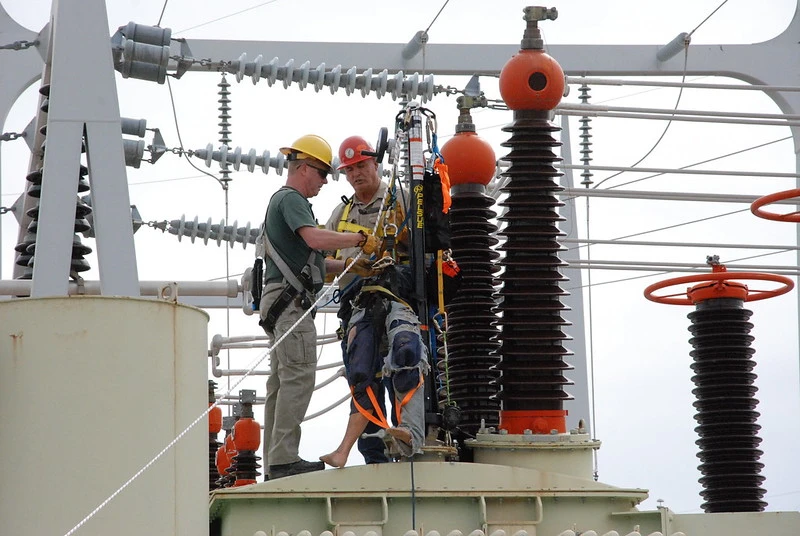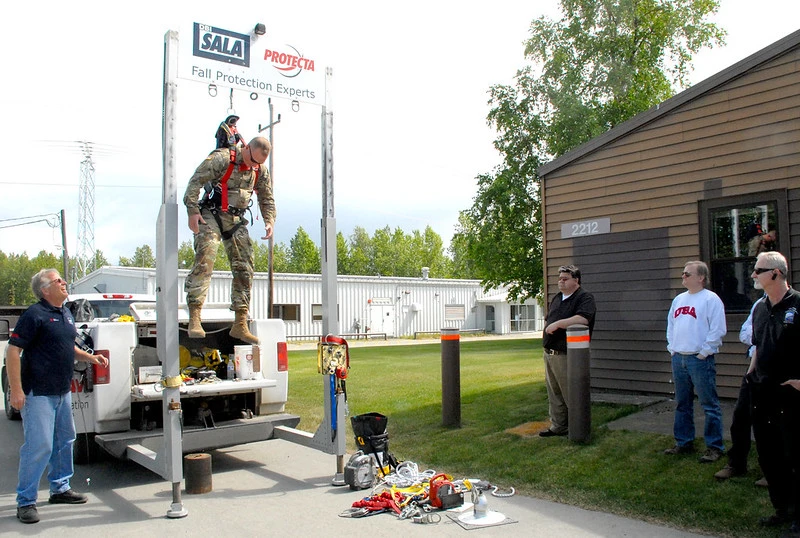Working at heights can offer significant dangers; therefore, companies and employees must follow established processes and utilize safety precautions to avoid accidents. This comprehensive guide outlines the crucial elements of procedures for working at heights, including how to correctly put on a fall protection harness, understanding the four fall protection methods, and identifying when to use fall protection. Additionally, you can download a working-at-height procedure template in MS Word to ensure compliance with OSHA’s standard 1910.140.
What is the definition of working at height?
We refer to tasks executed in locations where a fall could lead to injury as working at height.
This encompasses the operation of rooftops, scaffolding, staircases, or other elevated surfaces. In order to mitigate hazards, it is imperative that employers and employees adhere to rigorous safety protocols.
The Correct Method for Applying a Fall Protection Harness
The proper use of a fall protection harness is essential for the safety of workers. Step-by-step instructions are provided below:
- Examine the Harness: Check the hardware and straps for tatters or loose spots.
- Prepare the Harness: To untangle the straps, grasp the harness by the D-ring on the back.
- Enter the Harness: Like slipping on a knapsack, slide your arms through the shoulder straps.
- Fasten the Leg Straps: Secure the leg harnesses in a manner that is both comfortable and secure. Guarantee that there is no manipulation.
- Adjust the Shoulder Straps: Pull the shoulder straps to position the D-ring between the shoulder blades.
- Conduct a Fit Test: Verify that the harness is secure but still permits movement without being excessively loose.
Compliance with OSHA 1910.140, which specifies the requirements for personal fall arrest systems, necessitates the proper use of harnesses.

What are the Four Methods of Fall Protection?
The purpose of fall protection systems is to prevent injuries that may occur while performing duties at a height. The four primary techniques are listed below:
- Fall Arrest Systems: People frequently use these in conjunction with full-body restraints to halt a fall.
- Systems for Guardrails: Guardrails serve as a tangible barrier that prevents accidents from edges or openings.
- Safety Net Systems: Safety netting is installed beneath the work area to catch laborers in the event of a fall.
- Devices for Positioning: These devices enable employees to complete duties without using their hands while simultaneously preventing them from falling.

When is it appropriate to employ Fall Protection?
Fall protection is necessary whenever there is potential for a fall from an elevated position. In the following circumstances, OSHA mandates the use of fall protection:
- Construction Work: Conducted at a height of six feet or higher.
- General Industry Work: Perform tasks at a height of four feet or higher.
- Scaffolding: Necessary when operating at a height of 10 feet or higher.
- Around openings or holes: anytime there is a risk of slipping through.
It is imperative that employees comprehend these obligations and their responsibilities in order to preserve a secure work environment.
Download the Working at Height Procedure Template in MS Word
We have developed a Working at Height Procedure Template in MS Word to assist you in the development or updates of your working-at-height safety plan. This template is flexible and includes all the necessary information:
- Guidelines for risk assessment
- Selecting a fall protection system
- Checklists for inspection and maintenance
- Procedures for emergency situations
Download the Working at Height Procedure Template in MS Word.
Adherence to OSHA Standard 1910.140
The 1910.140 standard of OSHA defines the specifications for personal fall protection systems, which encompass inspection, performance, and usage criteria. All fall protection systems must meet these standards to ensure a safe work environment for employers.
By adhering to appropriate working-at-height procedures, including the proper application of a fall protection harness, the implementation of the four fall protection methods, and knowledge of when fall protection should be employed, workplace risks can be substantially diminished. To ensure compliance and the safety of your team, download the Working at Height Procedure Template in MS Word.
Prioritize safety; remain informed and prepared at all times.

